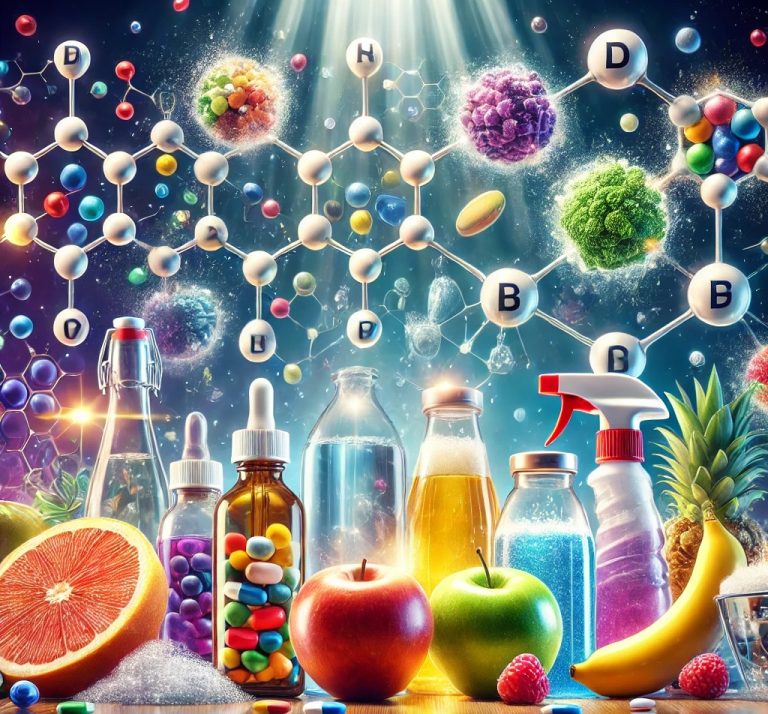The male reproductive system is a group of organs responsible for the production of male gametes (sperm) and hormones (especially testosterone) necessary for reproduction. It plays a crucial role in the continuation of species and also affects sexual characteristics and behavior. The primary organs involved in this system are the testes, ducts, glands, and external genitalia.
Key Components of the Male Reproductive System
- Testes (Testicles)
The testes are the primary reproductive organs in males. They are oval-shaped and located in a sac of skin called the scrotum. The main functions of the testes are:- Spermatogenesis: The process of sperm production occurs within the seminiferous tubules of the testes. Millions of sperm are produced each day to ensure fertility.
- Hormone Production: The testes produce the male sex hormone, testosterone, which is responsible for the development of secondary sexual characteristics (like a deeper voice, body hair, and muscle growth).
- Scrotum
The scrotum is a skin-covered sac that holds and protects the testes. It has a thermoregulatory role in sperm production. When the body is too warm, the scrotum relaxes, allowing the testes to move away from the body to cool down. When cold, it contracts to bring the testes closer to the body to keep them warm. - Epididymis
The epididymis is a long, coiled tube located at the back of each testis. It is divided into three sections: the head, body, and tail. The sperm produced in the testes is immature and incapable of fertilizing an egg. They pass into the epididymis, where they mature and are stored until ejaculation. - Vas Deferens (Ductus Deferens)
The vas deferens is a long muscular tube that connects the epididymis to the urethra, running through the pelvis. During ejaculation, the mature sperm are transported from the epididymis through the vas deferens to the urethra, where they mix with fluids from different glands to form semen. - Seminal Vesicles
Located behind the bladder, the seminal vesicles are a pair of glands that produce a significant portion of the fluid that becomes semen. This fluid is rich in sugars like fructose, which provides energy for the sperm, as well as proteins, enzymes, and other substances that help the sperm survive and function properly. - Prostate Gland
The prostate gland surrounds the urethra just below the bladder and contributes additional fluid to the semen. This fluid contains enzymes and substances that help sperm to swim more effectively and protect them from the acidic environment of the female reproductive tract. The prostate also helps to propel semen into the urethra during ejaculation. - Bulbourethral Glands (Cowper’s Glands)
The bulbourethral glands are two small glands located below the prostate. They produce a clear, slippery fluid that is released before ejaculation. This fluid helps to lubricate the urethra and neutralize any acidity that may be harmful to sperm. - Urethra
The urethra is a tube that runs through the penis and serves as the channel through which urine and semen exit the body. During ejaculation, the flow of urine is blocked, allowing only semen to pass. - Penis
The penis is the external male reproductive organ. It has dual functions: it delivers sperm into the female reproductive tract and serves as a conduit for urine to leave the body. The penis is made up of three columns of erectile tissue: two corpora cavernosa and one corpus spongiosum, which surrounds the urethra. During sexual arousal, these tissues fill with blood, causing the penis to become erect.
Sperm Production and Transportation
- Spermatogenesis:
The production of sperm cells, known as spermatogenesis, occurs in the seminiferous tubules of the testes. It begins with spermatogonia, which are undifferentiated germ cells. These cells divide and undergo several stages of maturation to form mature sperm (spermatozoa). Each sperm has:- A head: contains the nucleus with the genetic material and is covered by an acrosome, which contains enzymes that help the sperm penetrate the egg.
- A midpiece: packed with mitochondria that provide energy for the sperm to swim.
- A tail (flagellum): propels the sperm forward to reach the egg.
- Maturation in the Epididymis:
After production, the sperm are immature and move into the epididymis, where they mature over the course of several days. During this time, the sperm acquire the ability to swim and fertilize an egg. - Transportation through the Vas Deferens:
During ejaculation, the sperm are expelled from the epididymis into the vas deferens, a muscular tube that propels sperm toward the urethra. Here, sperm are mixed with fluids from the seminal vesicles, prostate gland, and bulbourethral glands, forming semen. - Ejaculation:
During sexual intercourse, stimulation causes muscular contractions that propel semen from the urethra and out of the body through the penis. The entire process ensures that the sperm are delivered into the female reproductive system for potential fertilization of the egg.
Hormonal Regulation
The male reproductive system is controlled by hormones, primarily produced in the hypothalamus, pituitary gland, and testes.
- Hypothalamus:
The hypothalamus releases Gonadotropin-Releasing Hormone (GnRH), which signals the pituitary gland to release gonadotropins. - Pituitary Gland:
The anterior pituitary gland secretes two key hormones:- Luteinizing Hormone (LH): Stimulates the Leydig cells in the testes to produce testosterone.
- Follicle-Stimulating Hormone (FSH): Works alongside testosterone to promote the production of sperm in the Sertoli cells within the seminiferous tubules.
- Testosterone:
Testosterone is the primary male sex hormone, produced by the Leydig cells in the testes. It is responsible for the development of male reproductive tissues and secondary sexual characteristics, such as muscle mass, bone density, body hair, and deepening of the voice. It also plays a role in the regulation of libido (sexual drive).
Common Disorders and Conditions
- Erectile Dysfunction (ED):
A condition where a man is unable to achieve or maintain an erection sufficient for sexual intercourse. ED can be caused by physical factors such as heart disease or diabetes, or psychological factors like stress and anxiety. - Prostate Enlargement (Benign Prostatic Hyperplasia):
This condition involves the enlargement of the prostate gland, which can cause difficulty in urination as it presses against the urethra. It is common in older men. - Testicular Cancer:
A rare but serious form of cancer that affects the testicles. It is more common in younger men and has a high survival rate if detected early. - Male Infertility:
Male infertility can result from a variety of factors, including low sperm count, poor sperm motility, or abnormalities in sperm shape. Hormonal imbalances, genetic issues, or damage to the reproductive organs can also contribute to infertility.
See in Fig.

Here is a medical diagram of the male reproductive system, showing its key components and their functions. This visual representation should help you better understand the system’s structure and how sperm is transported from the testes to the urethra.
12 questions and answers based on the male reproductive system:
1. Question: What is the primary function of the testes in the male reproductive system?
Answer: The primary functions of the testes are to produce sperm (spermatogenesis) and to secrete the male hormone testosterone.
2. Question: Where is sperm stored and matured after it is produced in the testes?
Answer: Sperm is stored and matured in the epididymis, a long coiled tube located at the back of each testis.
3. Question: What is the role of the scrotum in sperm production?
Answer: The scrotum helps regulate the temperature of the testes, keeping them cooler than the body’s core temperature, which is essential for sperm production.
4. Question: Which glands produce the fluid that nourishes and protects sperm?
Answer: The seminal vesicles, prostate gland, and bulbourethral glands (Cowper’s glands) produce fluids that nourish, protect, and support the sperm during ejaculation.
5. Question: What is the function of the vas deferens?
Answer: The vas deferens is a muscular tube that transports mature sperm from the epididymis to the urethra during ejaculation.
6. Question: How does the prostate gland contribute to semen production?
Answer: The prostate gland produces a fluid that helps to nourish sperm, facilitates sperm motility, and protects them by neutralizing the acidic environment of the female reproductive tract.
7. Question: What is testosterone, and what role does it play in the male body?
Answer: Testosterone is the primary male sex hormone produced by the testes. It regulates sperm production, develops secondary sexual characteristics like muscle mass and body hair, and influences sexual drive (libido).
8. Question: What is spermatogenesis?
Answer: Spermatogenesis is the process of sperm production that occurs in the seminiferous tubules of the testes.
9. Question: What role does the bulbourethral gland (Cowper’s gland) play during ejaculation?
Answer: The bulbourethral gland secretes a clear fluid before ejaculation that lubricates the urethra and neutralizes any acidic residues from urine, helping to protect sperm.
10. Question: What is the structure of a sperm cell, and what are its main components?
Answer: A sperm cell consists of three main parts:
- Head: Contains the nucleus and genetic material (DNA) and is covered by an acrosome, which contains enzymes that help the sperm penetrate the egg.
- Midpiece: Packed with mitochondria that provide energy for movement.
- Tail (flagellum): Propels the sperm forward.
11. Question: What is erectile dysfunction, and what might cause it?
Answer: Erectile dysfunction (ED) is the inability to achieve or maintain an erection sufficient for sexual intercourse. It can be caused by physical conditions such as cardiovascular disease or diabetes, or psychological factors like stress or anxiety.
12. Question: How does the urethra function in both the urinary and reproductive systems?
Answer: The urethra serves as a common pathway for both semen (during ejaculation) and urine (during urination). However, a muscular valve prevents the simultaneous flow of urine and semen.






